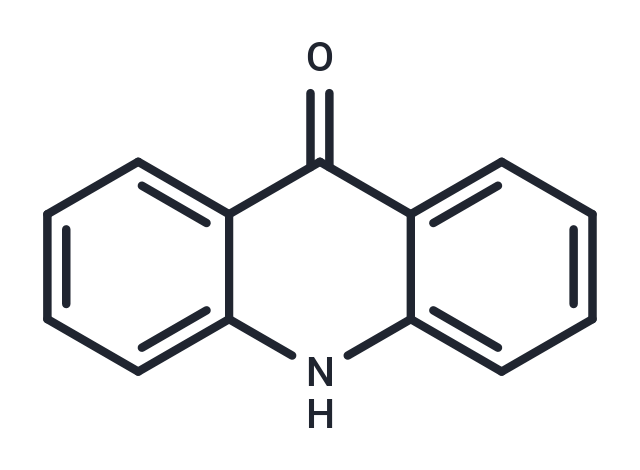Shopping Cart
- Remove All
 Your shopping cart is currently empty
Your shopping cart is currently empty

Acridone could induce cell apoptosis, inhibited ABCG2 (ATP-binding cassette sub-family G member 2) protein, and adjusted hormone level.

| Pack Size | Price | Availability | Quantity |
|---|---|---|---|
| 1 g | $30 | In Stock | |
| 1 mL x 10 mM (in DMSO) | $29 | In Stock |
| Description | Acridone could induce cell apoptosis, inhibited ABCG2 (ATP-binding cassette sub-family G member 2) protein, and adjusted hormone level. |
| Molecular Weight | 195.22 |
| Formula | C13H9NO |
| Cas No. | 578-95-0 |
| Smiles | O=c1c2ccccc2[nH]c2ccccc12 |
| Relative Density. | 1.23 g/cm3 |
| Storage | Powder: -20°C for 3 years | In solvent: -80°C for 1 year | Shipping with blue ice. | |||||||||||||||||||||||||||||||||||
| Solubility Information | DMSO: 65 mg/mL (332.96 mM), Sonication is recommended. H2O: Insoluble | |||||||||||||||||||||||||||||||||||
Solution Preparation Table | ||||||||||||||||||||||||||||||||||||
DMSO
| ||||||||||||||||||||||||||||||||||||

Copyright © 2015-2025 TargetMol Chemicals Inc. All Rights Reserved.